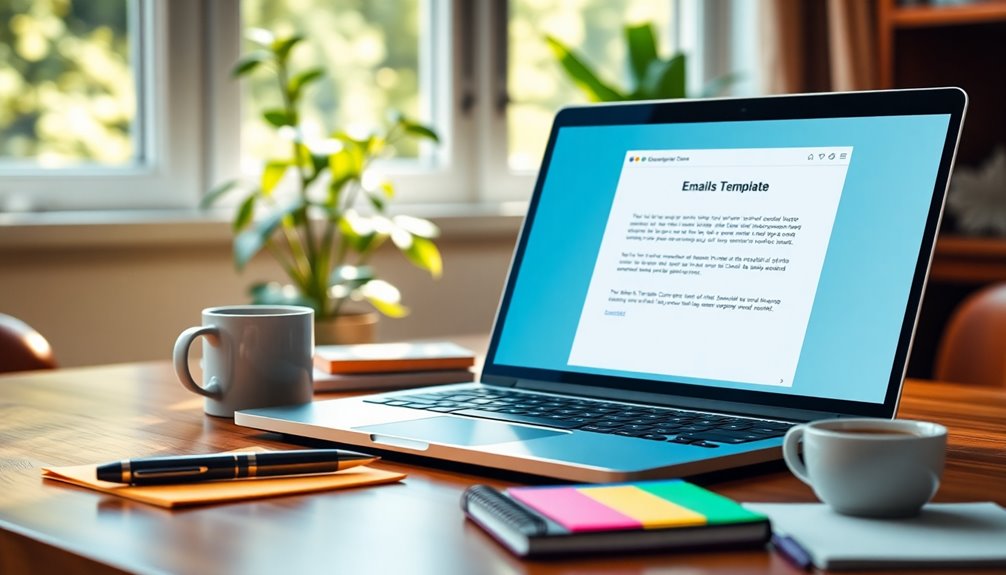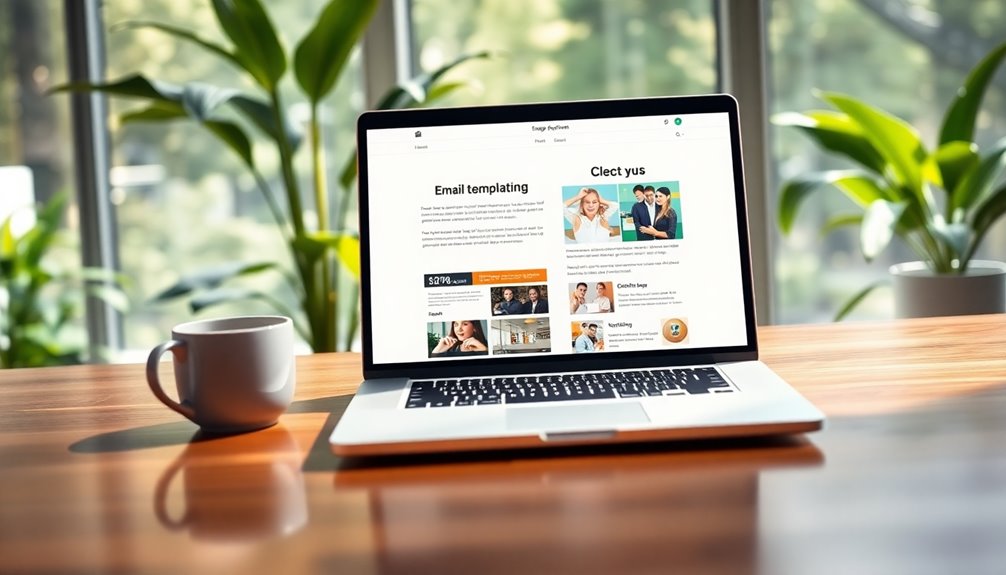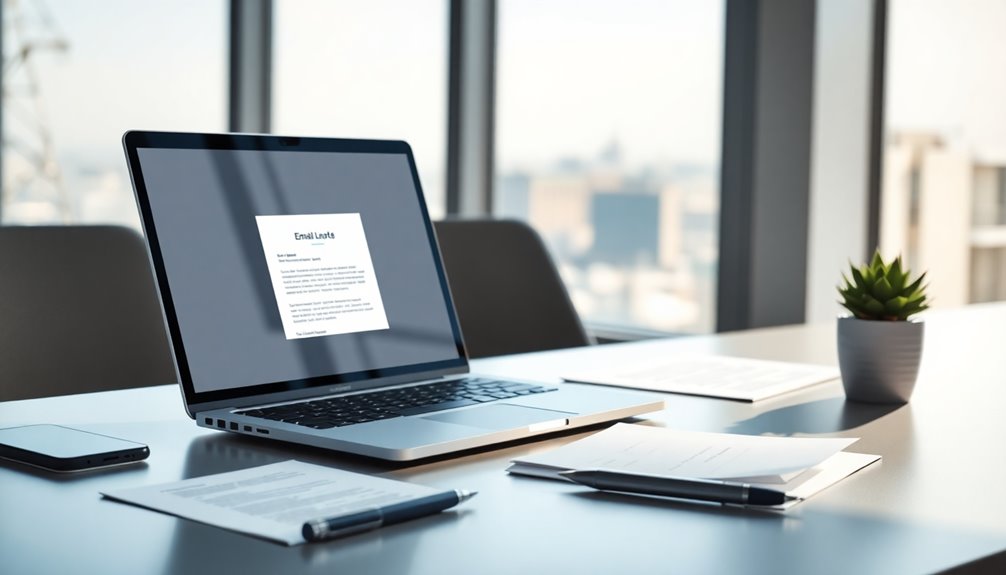To write an email to your professor that gets a quick response, start with a clear, specific subject line. Use a formal greeting and introduce yourself briefly, mentioning your class and any relevant details. Keep your email focused on a single question or request to respect their time. Avoid vague language and stick to proper grammar and punctuation for clarity. Finally, include a polite sign-off. Following these guidelines shows professionalism and makes it easier for your professor to respond promptly. Want tips on crafting compelling subject lines and effective closings? Keep exploring for more insights!
Key Takeaways
- Use a clear and specific subject line that indicates the email's purpose and urgency.
- Begin with a formal greeting and address the professor by their correct title.
- Introduce yourself briefly, including your full name and relevant course details.
- Clearly articulate your question or request in a focused manner to respect their time.
- Proofread your email for grammar and punctuation to reflect professionalism and attention to detail.
Introduction
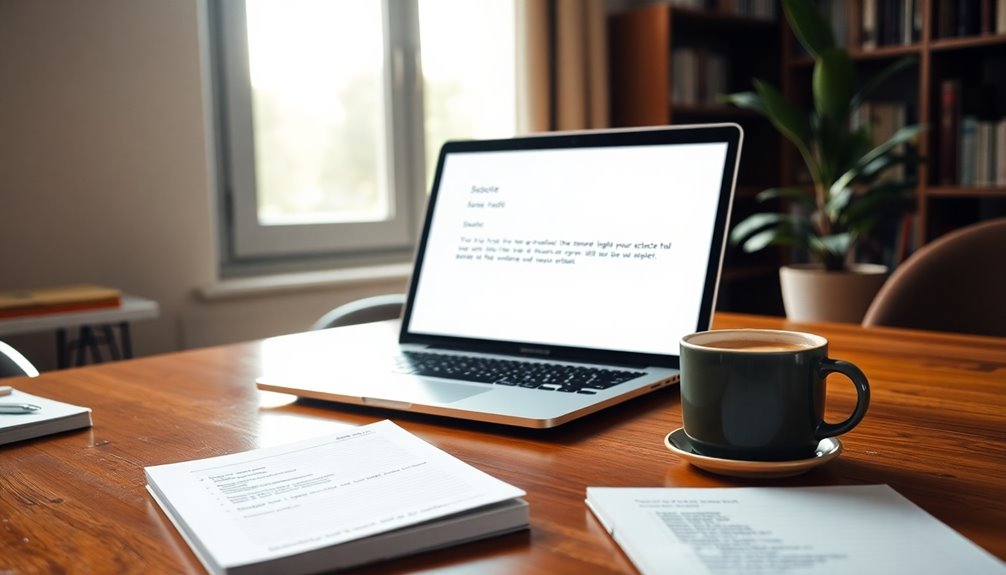
Writing an effective email to a professor can make a significant difference in how quickly you get a response. When you craft your email, you want to ensure it's clear and concise. A well-structured email not only demonstrates your professionalism but also respects your professor's time.
Start with a clear and informative subject line, like "Request for Extension." This helps your professor quickly identify the purpose of your email and prioritize their responses.
Include relevant context, such as your name and class details, so they can easily recall your situation. It's also crucial to maintain a professional tone throughout your email. Using proper etiquette and showing respect for your professor's time can encourage quicker replies.
Moreover, pay attention to grammar and punctuation; errors can distract from your message and may give a poor impression.
Establishes Professional Communication Norms

Establishing professional communication norms in your emails sets the stage for respectful and effective interactions with your professors. When you send an email to your professor, using a proper email format is crucial.
Start with a formal greeting, and close with a polite sign-off. This demonstrates professionalism and makes it easier for professors to recognize and prioritize your email.
In your email, always include your full name and relevant class information. This context helps professors respond more efficiently, as they can quickly identify your course and the specific issue at hand.
Keeping your email concise and focused on a single inquiry or request shows respect for their time and increases the chances of a quick reply.
Clear Subject Line

A clear subject line acts as your email's first impression and sets the tone for communication with your professor. In a college setting, you need to grab their attention quickly. Instead of vague phrases like "Question" or "Help Needed," use specific and informative subject lines. For example, "Request for Extension on Assignment Due Date" clearly communicates your intent and urgency.
Keep your subject line concise—ideally under 10 words—to enhance readability. This approach allows professors to quickly assess the purpose of your email. Additionally, including specific identifiers, such as the course name or code, helps them recognize the context immediately.
A clear subject line not only aids in your email's immediate recognition but also assists professors in easily retrieving it later if they need to refer back.
When crafting your formal email, remember that your subject line is crucial. It sets the foundation for a successful interaction and increases your chances of getting a swift response. By being specific and clear, you show respect for your professor's time and improve your communication effectiveness.
Step-by-Step Guide to Crafting Emails

Crafting an effective email to your professor involves several key steps that ensure clarity and professionalism.
Start with a clear and concise subject line, like "Request for Clarification on Assignment Due Date." This grabs your professor's attention right away.
Next, use a formal salutation, ensuring you spell the professor's name correctly. This demonstrates respect.
Then, briefly introduce yourself by stating your full name, academic year, major, and the specific course. This provides context for your request.
When you email your professor, make sure to clearly articulate your question or request. Keep it focused and direct, avoiding unnecessary details or lengthy explanations.
For example, if you need clarification, you might say, "I'd like to ask a question about the assignment requirements."
Dos and Don'ts for Student Emails
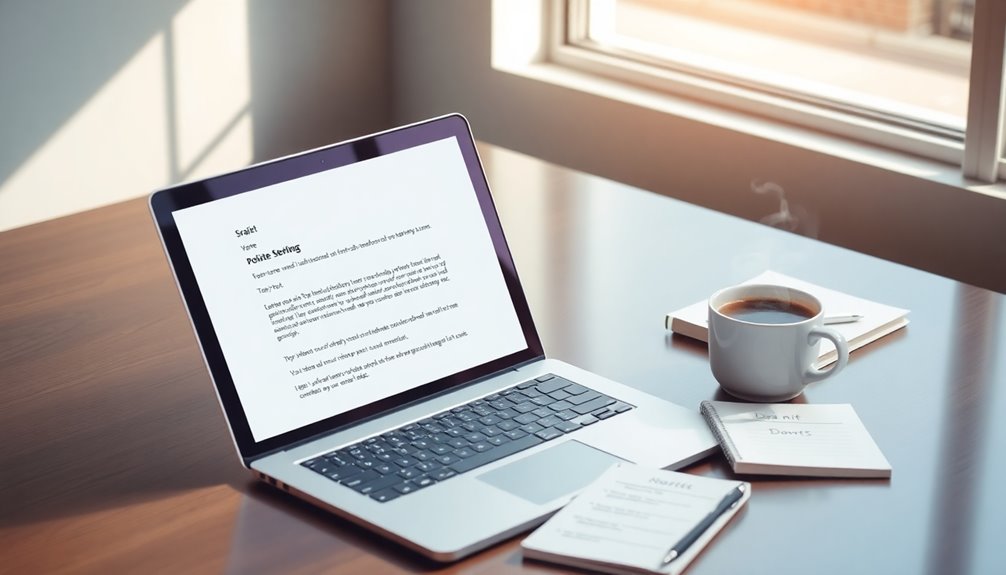
When sending emails to your professors, following specific dos and don'ts can make a significant difference in how your message is received.
First, do use a clear and concise subject line that directly indicates your purpose. For example, "Request for Extension on Assignment Due Date" grabs attention better than vague phrases like "Help."
Next, begin your email with a formal greeting, using the professor's correct title and name to show respect.
On the flip side, don't use informal language, emojis, or abbreviations. These can undermine the seriousness of your inquiry. It's also essential to proofread your email for grammar, spelling, and punctuation errors. A well-crafted message reflects your attention to detail and respect for your professor's time.
Furthermore, feel free to utilize email templates for structure, but always personalize them for your situation.
Lastly, be sure to check your syllabus for any relevant information before reaching out; it shows initiative and may answer your questions without needing to send an email.
End with a polite closing, such as "Best regards," to maintain professionalism.
Following these dos and don'ts can lead to quicker, more effective responses.
Examples of Inquiry Emails
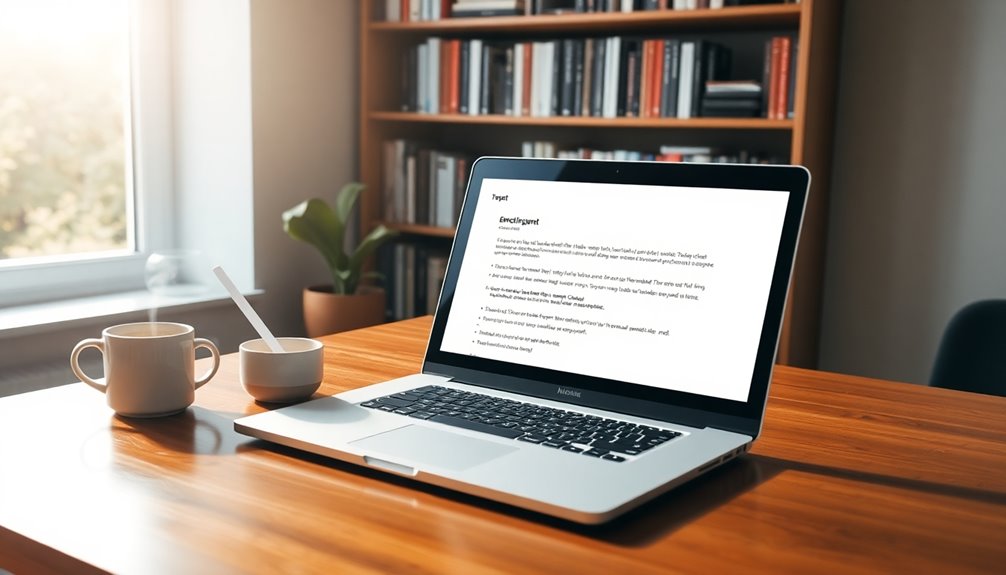
When requesting a meeting, propose times:
"Hi Professor Brown, I'd like to discuss my project. I'm available Tuesday or Thursday during your office hours. Please let me know if either works for you."
Always include your full name and relevant course details in your email signature to help your professor quickly identify who you are and the context of your inquiry.
Pro Tips for Writing Effective Emails

Writing effective emails to your professor can significantly improve communication and enhance your academic experience. To start, always use a clear and concise subject line that indicates the purpose of your email, like "Request for Meeting" or "Question About Assignment Due Date." This helps your professor quickly identify the email's relevance when you send an email.
Next, begin with a respectful salutation, using the professor's correct name to establish professionalism. Keep your email focused and succinct; ideally, limit it to three short paragraphs. Provide relevant context, including your name, class, and specific details about your inquiry. This gives the professor the necessary information to address your question effectively.
When you end an email, always include a polite closing. Express gratitude for your professor's time, such as saying you'd appreciate their assistance. This reinforces a positive tone and encourages a prompt response.
Final Thoughts

Effective communication with your professor can make a world of difference in your academic journey. When you send an email, remember that a clear and concise message increases the likelihood of a quick response. Start with a specific subject line that reflects the purpose of your email, making it easier for your professor to prioritize their responses.
Always include relevant details like your name, class, and a brief context for your request. This helps your professor identify your needs quickly, especially since they juggle numerous inquiries daily.
Politeness is crucial; use proper salutations and closings to make a positive impression. A respectful tone encourages engagement and helps you stand out among other emails.
Timing matters too. Sending emails during regular business hours rather than late at night or on weekends can result in faster responses, as professors typically focus on work during those times.
If you haven't received a reply after a week, follow up politely. Acknowledge their busy schedule while demonstrating your persistence and respect for their time.
Frequently Asked Questions
How Do You Write a Quick Email to a Professor?
To write a quick email to your professor, start with a clear subject line that reflects your message's purpose.
Use a respectful salutation, like "Dear Professor Smith," and briefly introduce yourself.
State your inquiry directly in the first paragraph, focusing on one or two key points.
Keep it concise to enhance clarity.
How Do You Write a Quick Response to an Email?
To write a quick response to an email, start by acknowledging the sender's message.
Keep your reply focused and concise, addressing their main points directly. Use bullet points for clarity if you're answering multiple questions.
Make sure you cover all their concerns to minimize follow-ups.
How to Politely Ask a Professor to Reply to an Email?
When you need to politely ask a professor to reply to your email, start with a clear subject line that reflects your request.
Acknowledge their busy schedule and express appreciation for their time.
Briefly remind them of your previous email to provide context, focusing on why a response is important.
Remember to maintain a respectful tone and consider waiting a few days before following up if you haven't heard back.
How Do You Write a Get Well Soon Email to a Professor?
When you write a get well soon email to your professor, start with a respectful greeting like "Dear Professor [Last Name]."
Express your genuine concern, saying something like, "I hope this message finds you on the mend."
Keep your message brief and focused, avoiding too much detail.
If appropriate, offer help with a line like, "Please let me know if there's anything I can do."
Close with a polite sign-off and your name.
Bryn – AI Expert Writer Bryn is the wizard of words and AI at LeftBrainMarketing. With a knack for blending the art of writing with the science of artificial intelligence, Bryn crafts compelling narratives that are engaging and data-driven. Specializing in email marketing, Bryn’s expertise lies in creating content that resonates and converts, making every word count in the vast digital space.

